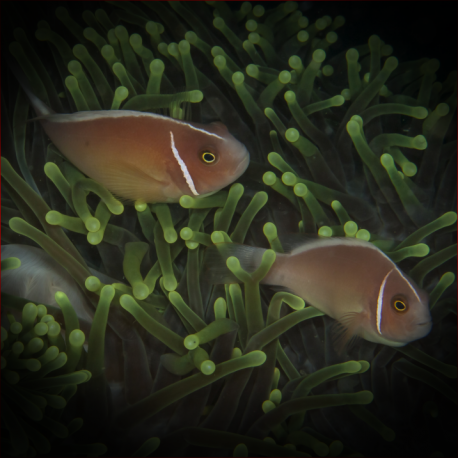More info
Datasheet
| Minimum Tank Size | 113 litres / 29.85 US gallons |
| Maximum Size | 10.2cm / 4.02inches |
| Reef Compatible | Yes |
| Temperament | Semi-aggressive |
| Care Description | Moderate |
| Specific Gravity | 1.020-1.025 |
| Carbonate Hardness | 8-12 |
| pH | 8.1-8.4 |
General Description
The Pink Skunk Clownfish, scientifically known as Amphiprion perideraion, boasts a peach-orange base with two distinct white stripes, one running from the nose along the back and another situated behind the eyes.
Aquarium Suitability
With a moderate level of care demanded, the Pink Skunk Clownfish thrives in aquariums with a minimum size of 113 litres, appreciating companionship and staying close to its partner.
Demands, Care and Hardiness
Being a bit more challenging to spawn and rear than other clownfish species, the Pink Skunk Clownfish requires dedication from marine aquarists for successful breeding. Females tend to be larger, and the pair typically stays in proximity within the tank. They are protective egg layers, with eggs hatching in 8-11 days, needing separate rearing and specific diets for the fry.
Reef Suitability
This species is considered reef-compatible, adding a lively touch to reef aquariums.
Aquarium Setup
Optimal water conditions for the Pink Skunk Clownfish include a pH range of 8.1-8.4, a specific gravity between 1.020-1.025, and a carbonate hardness of 8-12 dKH.
Behaviour
Pink Skunk Clownfish display semi-aggressive behavior and exhibit schooling tendencies, forming cohesive groups even into adulthood.
Feeding and Diet
Their omnivorous diet includes meaty foods and herbivore preparations, ensuring a diverse and well-rounded nutritional intake.
Dimorphism and Captive Reproduction
With females being the larger of the pair, Pink Skunk Clownfish are known to engage in protective egg-laying behaviors, requiring a separate aquarium for fry rearing and specialized diets.
Habitat and Distribution
In the wild, Pink Skunk Clownfish are found in the Indo-Pacific region, inhabiting tropical waters characterized by coral reefs and anemones.

